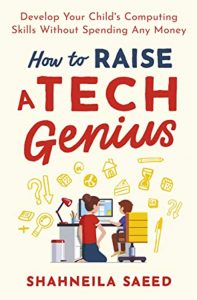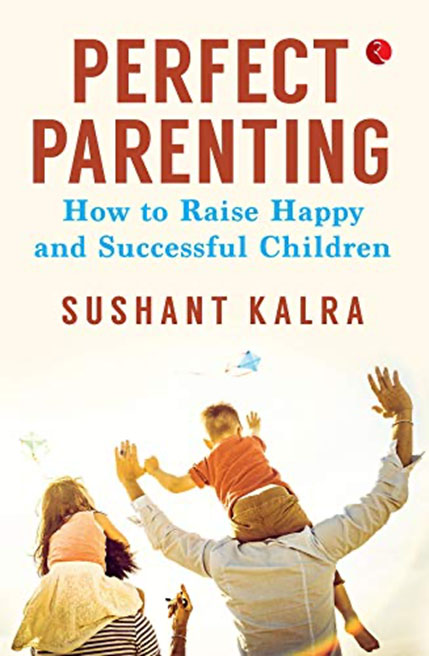The ‘present’ generation and its values have oft taken the blame for much that is wrong in the world. The generation keeps changing just as the wrongs keep changing. As people age, the side of this blame game that they represent also changes. Yet, seldom do people sit and think who is responsible for the changing values of the ‘present generation’ that has led to so much ‘wrong’ in the world. Parenting for most people is not a conscious choice. We grow up, build careers, and start a family, because that is what society teaches us. This is taken as a given without any conscious thought about who can be a good parent. Considering that family is the primary unit of socialization, it would seem obvious that families would take greater responsibility in the value system that children inherit. Sadly though, parenting is taken as a task that everyone already knows how to do. New parents thus try to recall what their parents did, sift through what seems to make sense in their context and tumble their way around parenting.
 Given this context, the three books covered here are worthwhile reads by new parents who are still trying to unravel the complexity of parenting their twenty-first century children. The contexts around us are changing fast and what seemed as sound parenting even a decade ago needs to be retuned to fit the changes that the turn of the decade would have seen. Many books that address the issue of parenting tend to do so in the context of theories of child development, developmental milestones, needs of children at various developmental stages and the various parenting styles. All three books addressed here are a sharp deviation from this academic approach. The books are written in a simple language that parents with little knowledge of psychology can understand. The books are contemporary and replete with specific suggestions for improving the everyday parenting experience.
Given this context, the three books covered here are worthwhile reads by new parents who are still trying to unravel the complexity of parenting their twenty-first century children. The contexts around us are changing fast and what seemed as sound parenting even a decade ago needs to be retuned to fit the changes that the turn of the decade would have seen. Many books that address the issue of parenting tend to do so in the context of theories of child development, developmental milestones, needs of children at various developmental stages and the various parenting styles. All three books addressed here are a sharp deviation from this academic approach. The books are written in a simple language that parents with little knowledge of psychology can understand. The books are contemporary and replete with specific suggestions for improving the everyday parenting experience.
Sushant Kalra is the founder of Parvarish Institute of Parenting. He describes the role of a parent as ‘Making children responsible for their own lives.’ This sums up the description of the sixteen chapters of Perfect Parenting: How to Raise Happy and Successful Children. The book begins by talking about the need for learning to be a parent. The initial few chapters are dedicated to helping what they envision for their children. The rest of the chapters talk about common issues that parents and children face in their engagement with each other. Recognizing children’s abilities, motivating them to perform beyond their limits, building self-esteem, addressing conflict areas around eating junk food, restricting screen time and comparison between siblings are some of the issues that the book covers.
The book provides practical advice on how to engage with children by using anecdotes and case studies from Kalra’s work in his institute, using the Parvarish model. Many aspects of the model are in consonance with the principles propounded by the humanistic approach in psychology. Accepting children for who they are, recognizing their potential, their wishes, desires and aspirations, acknowledging the individual within the context in which he/she lives are some of the suggestions given in the book. Another important aspect that has been emphasized by the approach is the need for negotiation and collaborative decision making. Parents and children, particularly adolescents, can work together towards arriving at a common understanding. The Parvarish model, Kalra claims, revisits the western model of cognitive development. For instance, the use of third person to talk about self during early childhood, known as egocentric behaviour in developmental psychology, Kalra interprets as an indication of high self-esteem of children.
Kalra reiterates the need to focus on the limitlessness of children’s capabilities and encourage them to work with confidence.
 Ashwin Sanghi and Kiran Manral’s book 13 Steps to Bloody Good Parenting is in sharp contrast to Kalra’s book. While Kalra emphasizes the need to delabel children, Manral in the Introduction section to the book questions the labels attached to parents. She writes, ‘We can never be perfect parents, because there are no perfect parents’ (p. x). The book as the name suggests covers thirteen domains that spread across the broad spectrum of parenting concerns. It talks about loving children unconditionally, celebrating their achievement, protecting them but also letting them free, presenting challenges, inspiring them to do better, listening to each other, and praising children for who they are. Among each of these areas, the authors have shared practical tips on what parents should do. Contrary to what Sanghi writes in the Foreword, these tips are prescriptive. Much of this advice stems from his personal experiences of parenting. The advice is thus strongly grounded in practicality. The constant effort of a parent in trying to balance care, concern and exasperation is evident. The central theme that cuts across all the chapters in the book is that of creating strong parent-child bonds based on communication.
Ashwin Sanghi and Kiran Manral’s book 13 Steps to Bloody Good Parenting is in sharp contrast to Kalra’s book. While Kalra emphasizes the need to delabel children, Manral in the Introduction section to the book questions the labels attached to parents. She writes, ‘We can never be perfect parents, because there are no perfect parents’ (p. x). The book as the name suggests covers thirteen domains that spread across the broad spectrum of parenting concerns. It talks about loving children unconditionally, celebrating their achievement, protecting them but also letting them free, presenting challenges, inspiring them to do better, listening to each other, and praising children for who they are. Among each of these areas, the authors have shared practical tips on what parents should do. Contrary to what Sanghi writes in the Foreword, these tips are prescriptive. Much of this advice stems from his personal experiences of parenting. The advice is thus strongly grounded in practicality. The constant effort of a parent in trying to balance care, concern and exasperation is evident. The central theme that cuts across all the chapters in the book is that of creating strong parent-child bonds based on communication.
Two of the chapters of the book are dedicated to the important issue of detachment and protection. The authors highlight the need for allowing children to be free and learn from falling down. The focus is on raising children to be independent. Too much protection and clinginess can stifle their growth. Children must thus be encouraged to face their challenges by themselves. Parents should strive to stay connected and provide support to prevent children from getting hurt. But in most situations, facing failure would also be an important lesson in growing up.
Shahneila Saeed’s How to Raise a Tech Genius is focused on children’s ability to develop and use technology as they grow up. The author points out that while the world is filled with the use of technology and children are able to adapt to it with far greater ease than adults, there are far fewer people wanting to develop technology than the number of employment opportunities. This is likely to increase in the future when technology will replace all tasks that can be automated. In this context, it is important that children of today make the best use of this opportunity and develop technological skills.
The book presents a plethora of simple activities that can be performed with children at home that help them recognize the presence of technology in their lives. The activities also present opportunities for children to develop logical thinking and computational skills that will help them to prepare cognitive expertise for engaging in the field of technology. The activities are supplemented by resources that can be explored if children show further interest. The book is thus practical and useful for developing technological genius.
All three books present practical ideas that can be implemented by parents in engaging with children. While Kalra’s book attempts to link to theoretical ideas on parenting, the other two books follow an even more grounded approach. Thus, all three are useful resources for parents and professionals engaging with children. However, it must be noted that the books are situated in an urban context where children’s lifestyles are steeped in extended screen time, consumption of junk food, extensive engagement with social media, and the like. Although the books presume a homogenous Indian family context, parenting strategies recommended in all three books are suited to the cosmopolitan, middle class Indian family.

